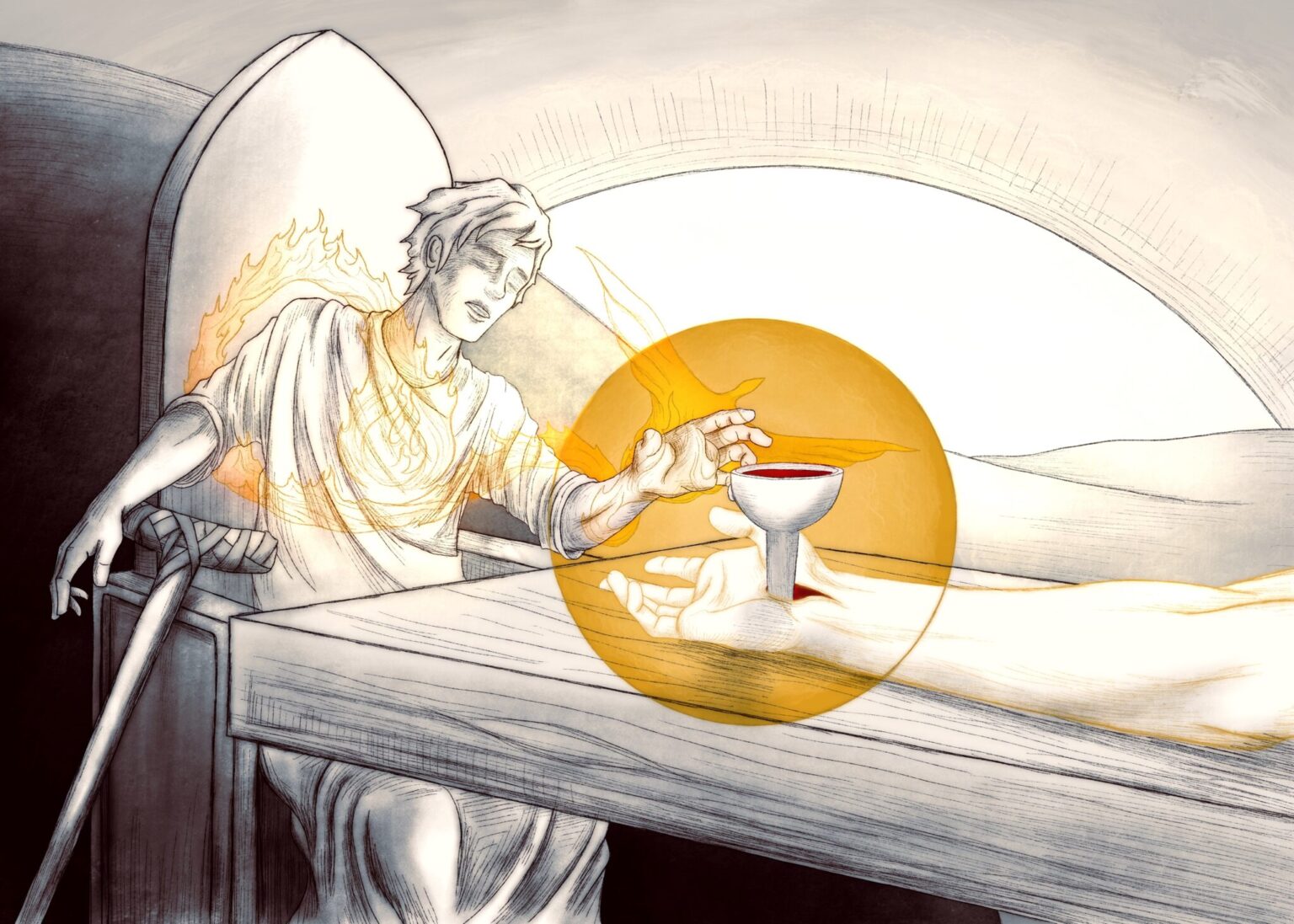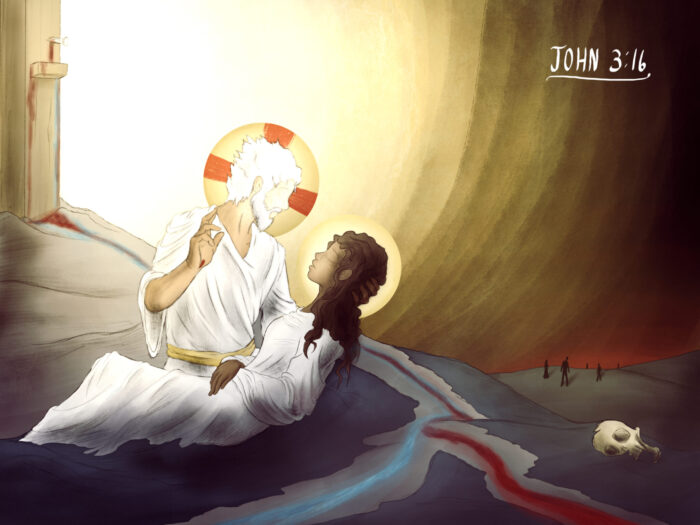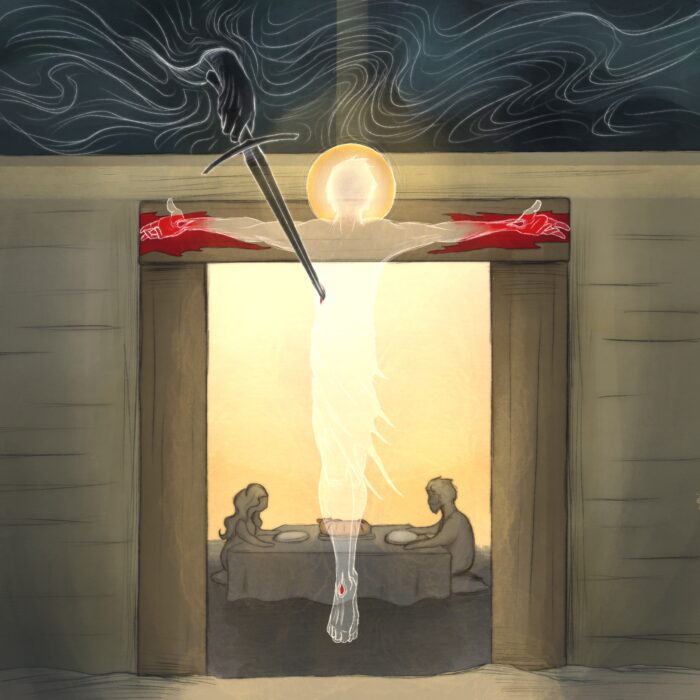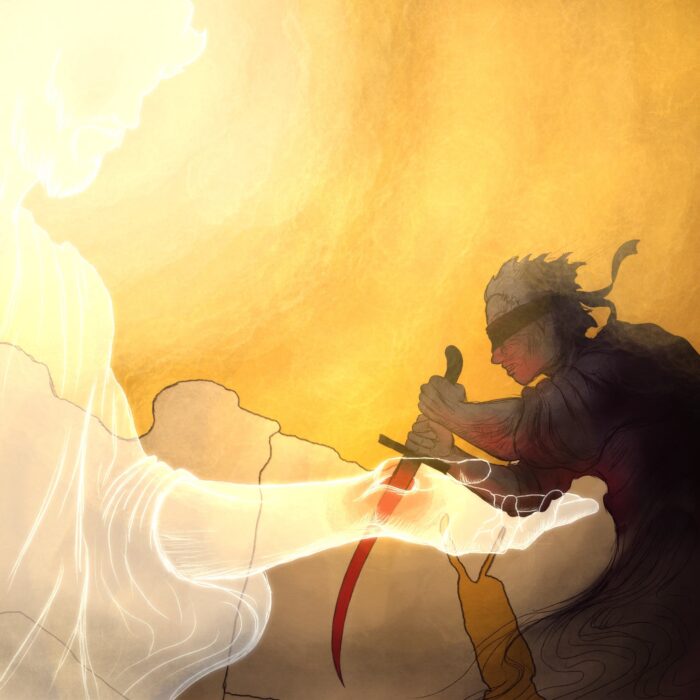Unlike most of the pictures I create for Full of Eyes, this one is topical rather than exegetical. I was asked to create an image that would weave together the themes of Mephibosheth invited to the king’s table (2 Samuel 9), the Christian as the “crippled soul” invited to the Lord’s feast (Luke 14:12-24, esp. v.13), and the wedding supper of the Lamb, where the healed and purified people of God delight themselves in the good food of all that God is for them in Christ (Revelation 19:6-9). The goal was to unite all of these images around the person of the crucified and risen Jesus, in whom alone our infirmity is healed, our impurity is cleansed, and we are seated at the feasting table of God’s own Triune joy.
First, notice that the entire scene is illuminated by the light of what seems to be the rising sun and yet is also the open tomb of the risen Christ; only in the light of Jesus’ resurrection is His life given on the cross the “true food and true drink” of His people. The dark stone that had been rolled over the tomb represents sin, death, suffering, sickness, and all that is overcome by the cross work of Christ.
With that in mind, notice next that the Christian is, as it were, being “drawn out” of the stone’s shadow so that he might receive fellowship with God in Christ. The crutch—representative not only of physical weakness and suffering, but also the deformity of our spirit—is being “swallowed up” into the darkness of the stone as it rolls away before the light of Christ’s resurrection.
Thirdly, see that the man is being drawn out of death and into the life of the risen Jesus through the work of the indwelling Holy Spirit. The Spirit encircles the Christian, upholding him and giving him the strength even to sit at the table, while he also carries the man’s hand toward the offered life of Christ. By the Spirit we see and receive God in Christ (2 Cor. 4:6).
Fourth, notice that the table itself—the table of fellowship with the Triune God—is the cross of Jesus Christ. It is here, at Christ’s cross, that the Son offers Himself through the Spirit to the Father (Heb.9:14) so that we might be gathered in to the very life and joy of God (Ps. 36:8; John 17:22-23; Rev.21:2-3). And if we are to know God so as to live (John 17:3), then it must be to this table that we come, it must be this meal of which we partake. We feast by faith on the living God only when we receive Him as the one whose body is broken and whose blood is poured out on Calvary.
Building on this concept, note finally—and most importantly—that the feast to which Christ invites His people is, ultimately, Himself. He is the abundance of God’s own house by whom humanity is satisfied (Ps.36:8); He is the good in all the goods salvation secures (Ps. 16:2); He is the feast of rich food and well-aged wine prepared for all peoples (Is.25:6-8); He is the Servant, the Bridegroom, and the Banquet of the Wedding Supper (Luke 12:37, 22:16; Rev. 19:6-8); He is the radiance of the Father’s glory by whom eternity is illumined (Rev.21:22), and He is the one in whom we see the beauty that will pervade creation like the waters cover the sea (Hab. 2:14).
Who could have imagined that when King David invited Mephibosheth to his table, he was picturing the consummation of reality itself; the grace-wrought, blood-bought gathering of weak, broken, sinful “cripples” up into the joy of God’s own life, to feast on the fullness of all that God is for them in the crucified and risen Son of David, Jesus Christ. Hallowed be His name!





